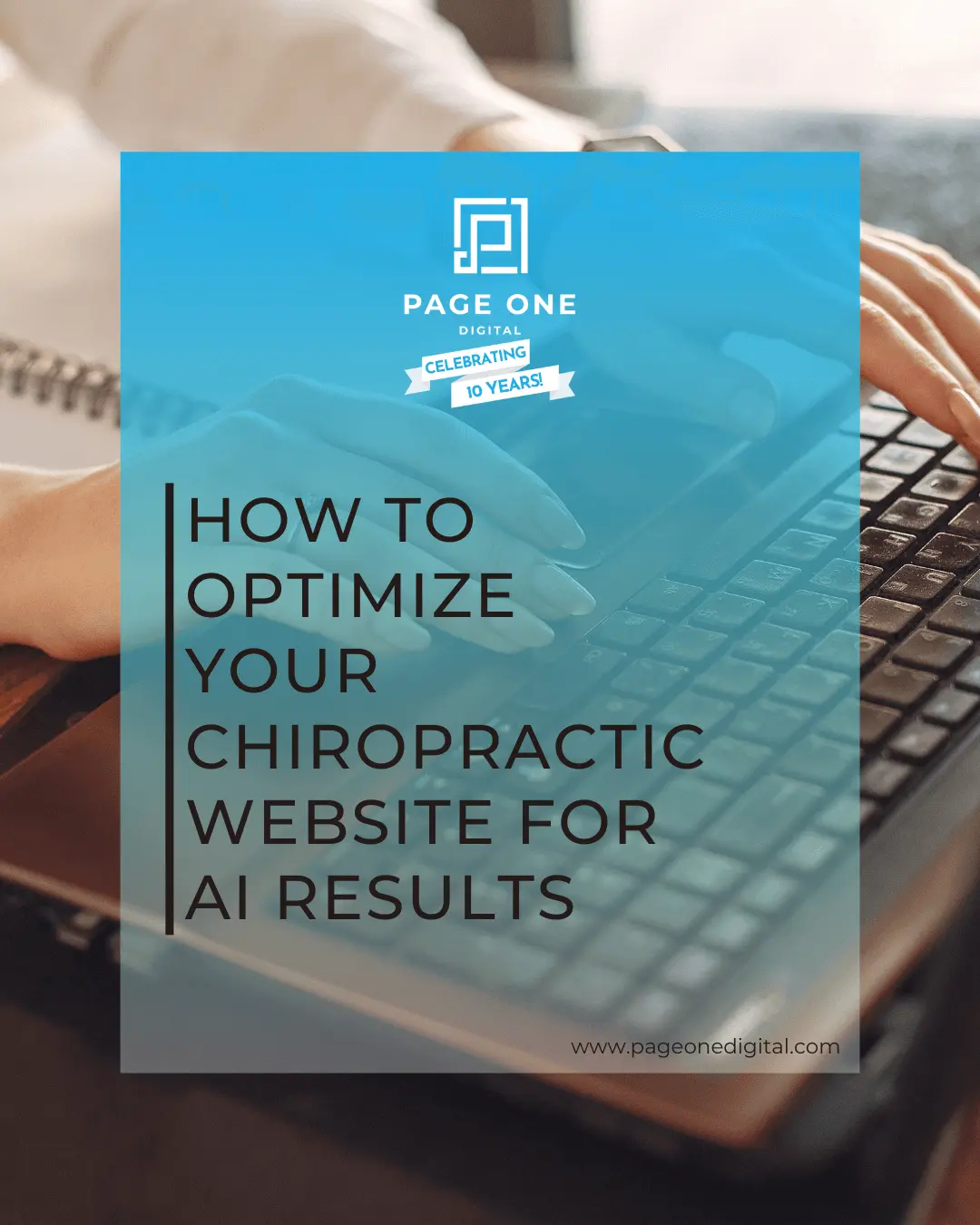With the rapid evolution of artificial intelligence (AI) and its growing influence on search engine optimization (SEO), it’s essential to ensure your chiropractic website is equipped to harness this technology effectively.
Imagine your practice not just being found online, but also ranking higher in search results thanks to AI-driven insights. As potential patients increasingly rely on smart algorithms to discover healthcare options, optimizing your site for AI can keep you in front of prospective patients.
Optimizing your chiropractic website for AI is no longer optional; it's essential. As algorithms evolve, they become smarter at understanding user intent and context. This means that websites must adapt to stay relevant.
How To Optimize Your Chiropractic Website for AI Results
Key Elements to Focus on for AI Website Optimization
When optimizing your chiropractic website for AI, focus on content quality. Create informative, relevant articles that address common patient questions and concerns. Use clear language to explain complex topics.
Next, ensure your site is user-friendly. An intuitive navigation structure helps both visitors and search engines understand your content better. Fast loading times are crucial too; nobody likes waiting.
Integrating schema markup can enhance how AI interprets your data. This structured information makes it easier for search engines to display rich snippets in search results. If you are successful at this, traffic to your website from Google Search might decrease since users will get all the information they need directly in Search results. However, your impressions from Search should dramatically increase.
Leverage local SEO strategies by including location-specific keywords related to chiropractic care in your copy and meta tags. This can help you rank higher when potential patients are searching for nearby services online.
Common Mistakes to Avoid
When optimizing your chiropractic website for AI, avoiding common pitfalls can make a significant difference in your results. One frequent mistake is neglecting mobile optimization. With more users accessing websites from their phones, ensuring that your site is responsive and user-friendly on all devices is crucial.Another error involves overloading content with keywords. While it’s essential to incorporate terms like "chiropractor near me," keyword stuffing can lead to poor readability and hurt your rankings. Focus instead on writing in a natural, conversational tone that engages readers while remaining relevant to search engines.Don’t overlook the importance of regular updates and fresh content. AI algorithms favor sites that are current and active; therefore, keeping blogs or articles up-to-date will help maintain relevance in search engine results.Effective SEO strategies should evolve regularly, especially to keep up with AI's role in Search results. If you want to ensure your chiropractic website is set up for success, reach out to us for an audit.
Related Posts

How Does Squarespace Perform for SEO?
The other day I met with a friend-of-a-friend who also happens to be a website designer/developer. Excited to make another friend in the field, we quickly got to talking about various platforms and tools we use. When he asked what platform we use at KP Kreative, I excitedly started to share all we are able to accomplish through Squarespace. And then, I kid you not, he scoffed out, “...but Squarespace sucks for SEO”. A bit more back and forth and I knew I had to do some digging for myself. Our websites all perform well for SEO, but is there something that we’re missing?

Why Mobile First Indexing Matters
Google continues to update its search algorithms to keep up with user expectations. Almost a year ago, Google announced a new Mobile First index which changed search results to focus on the mobile version of your site content first and index it according to that.

What SEO Means and How to Do It
SEO, search engine optimization, is a procedure to get your website to show up on search engines, like Google, for specific keyword searches. A lot of business owners don’t quite know what SEO is and end up being taken advantage of by companies claiming to be expert SEO’s.


